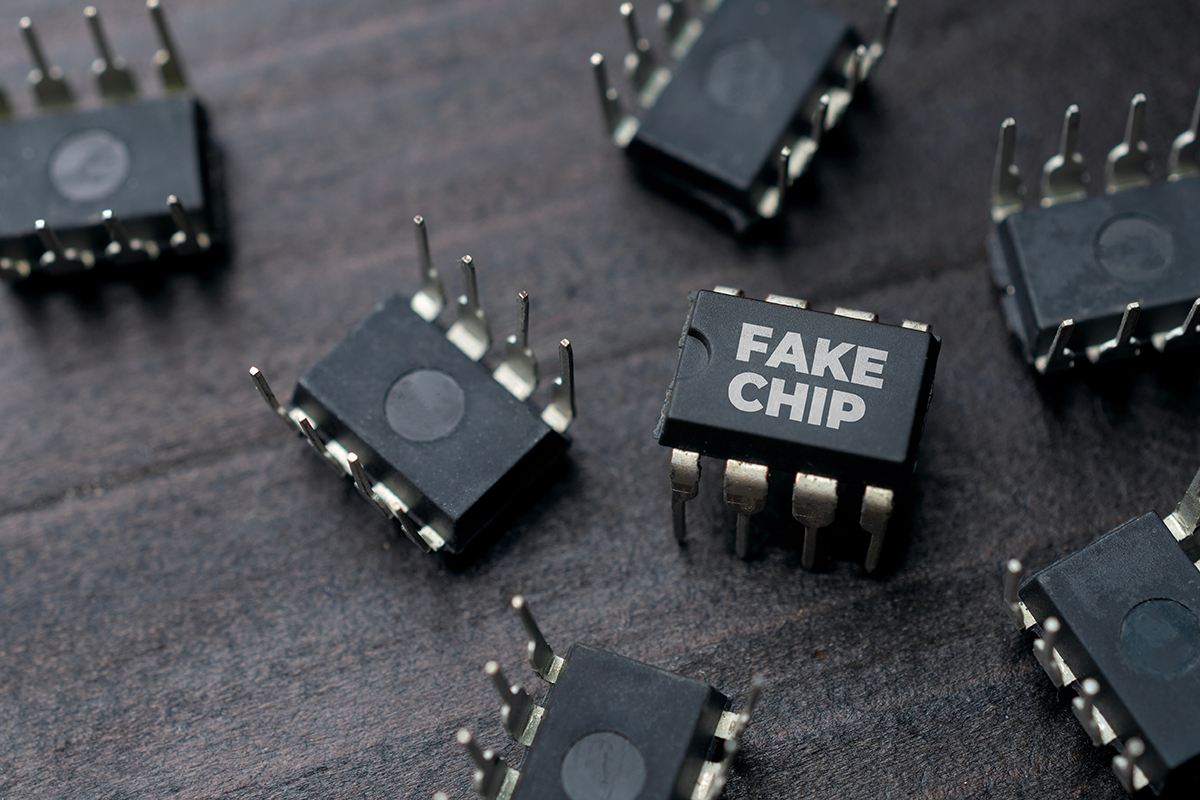Counterfeit PCBA parts have been a persistent issue for manufacturers for years. In 2024, the Electronics Reseller Association International (ERAI) reported a 25% increase in counterfeit parts compared to 2023, marking the highest number of parts reported by ERAI since 2015. But now that semiconductor supply chains have begun to normalize in 2025, is there still a risk? In this blog, we examine the PCBA outlook, counterfeit parts, and discuss a simple way you can protect your products.
PCBA Parts Outlook
Although the semiconductor market began to normalize in 2025, localized shortages continue to pose a significant risk. SupplyFrame, a leading electronics supply chain intelligence firm, highlights in its 2025 Outlook that while inventory is stabilizing, supply constraints fueled by high infrastructure costs, geopolitics, and talent shortages are expected to contribute to shortages through 2025 and beyond.
There is also concern that recent tariffs will create a significant disruption. SupplyFrame Commodity IQ Lead Time Index in April 2025 showed a spike in lead times that surpassed those seen during the COVID-19 pandemic. They are anticipating this increase to continue. Increases in lead time, in part, are a result of increased demand as companies purchase excess inventory of key electronics to avoid potential shortages when tariffs are in force. Another factor is the growth of AI, which relies on specialized hardware and systems to handle processing, computing, and power and cooling processes.
The CHIPS Act was intended to repatriate chip manufacturing to the US to alleviate the pain felt by some of the hardest-hit sectors, such as the automotive industry. However, the bulk of the manufacturing grants went to companies that manufacture cutting-edge chips, like those used by AI platforms. The problem is that shortages were of legacy chips, not cutting-edge chips. While the Act provides funding to address mature processes, the margins are lower, making it infeasible to absorb capital expenditures for fab construction, which is required to move manufacturing to the US.
Another factor fueling ongoing supply chain vulnerability is the accelerated pace of technological cycles, which has led to increased obsolescence of semiconductor components. Advanced chips now have significantly shorter market lifespans, typically ranging from two to five years. This rapid turnover has led to a surge in End-of-Life (EOL) notices, with nearly 750,000 electronic parts rendered obsolete in 2022 and more than 470,000 in 2023.
As a result of all these factors, demand for parts is outpacing supply. Rapid innovation, obsolete components, and unmet demand increase the risk of counterfeits entering the supply chain.
Counterfeit Components Are An Issue and Costly
Chip and component counterfeiting encompasses the unauthorized copying, modification, or misrepresentation of electronic parts. There is a cyclical relationship between supply/demand and counterfeiting. As the demand for chips rebounds (as is strongly anticipated in 2025) and legitimate supply chains struggle to keep pace, an opening is created that unauthorized channels and counterfeiters will exploit. High-value and critical components, such as AI chips, are also targets for illicit activity.
Recent data on counterfeit electronic parts suggests that the problem is growing, with some estimates suggesting that the market for counterfeit electronics could be in the hundreds of billions of dollars. While it’s difficult to pinpoint an exact percentage, ERAI reported that the number of counterfeit parts declined during the pandemic, likely due to manufacturing shutdown, but has steadily increased since 2022.
The trends in the types of components counterfeited have remained consistent over the last decade, with Analog ICs, Programmable Logic ICs, and Microprocessor ICs remaining the most targeted component types, accounting for more than half of all counterfeit components.
Mitigate the Risk of Counterfeit PCBA Parts
Counterfeit PCBA components continue to pose a significant risk in 2025, driven by persistent shortages, lengthy lead times, and rapid technological advancements. The best way to protect yourself is to work with a reputable electronics manufacturer that partners with trusted distributors.
Siemens Manufacturing has rigorous procurement and inspection protocols in place to help customers avoid the financial and operational costs of counterfeit parts. There may be times when we are unable to procure your components through one of our vetted and authorized distributors, and, with our customer’s permission, we may find an alternative resource. We insist that any non-franchised distributor have controls in place to ensure component traceability back to the manufacturer or adequate inspection to mitigate the risk of counterfeit parts. In addition, the components will be inspected by our QC team upon receipt, ensuring that only genuine, reliable parts are integrated into your assemblies. With Siemens Manufacturing, you gain a partner dedicated to safeguarding your supply chain and delivering uncompromised peace of mind.
Contact Siemens Manufacturing to learn how we help reduce your exposure to counterfeit parts.
